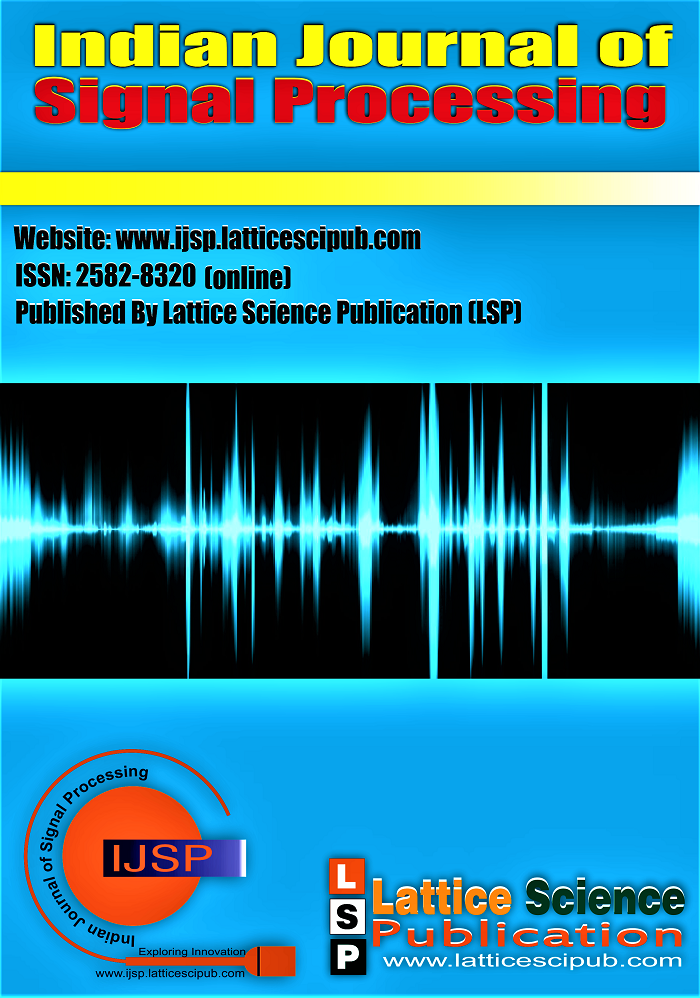The Performance Analysis of Optimized Integrated Framework for Smart Grid
Main Article Content
Abstract
Supervisory Control and Data Acquisition system are monitoring and controlling system. It focuses on the supervisory level, not the full control permissions. It is gathering real-time data with the help of several kinds of sensors. Internet of Things (IoT) is a three-dimension any time, any place anything connectivity for anything. This paper performing the comparison between the SCADA and optimization framework for smart grid. A power quality model is integrated with the optimization framework. Moreover, this paper focused on the comparison of optimized framework with SCADA.
Downloads
Article Details

This work is licensed under a Creative Commons Attribution-NonCommercial-NoDerivatives 4.0 International License.
How to Cite
References
Data Acquision, last accessed on 15 june 2019, http://www.ni.com/data-acquisition/what-is/
R. Dhobley and A. Chopde, “Comparative Analysis of Traditional SCADA Systems and IOT Implemented SCADA”, International Journal of Advance Research, Ideas and Innovations in Technology, volume 3, issue 6, 2017.
R. Bhaiswar et al , “Power Management using PLC and SCADA”, International Journal of Engineering Innovation &Research Volume 1, Issue 1, ISSN : 2277 – 5668,2012.
Last Accessed on 12 july 2021 link: https://www.softwebsolutions.com/resources/scada-system-vs-iot.html
Last Accessed on 10 july 2021 link: https://www.softwebsolutions.com/resources/scada-system-vs-iot.html
Last Accessed on 11 july 2021 link: https://www.iotnxt.com/2018/07/18/iot-or-scada/
Last Accessed on 11 july 2021 link: https://www.finoit.com/blog/sensor-types-used-iot/
ASHRAE, “Ventilation for acceptable indoor air quality,” Amer. Soc. Heating, Refrigerating Air-Conditioning Eng. Inc, Atlanta, GA, USA, Standard 62.1-2004, 2004.
S. Paudyal, C. A. Cañizares, and K. Bhattacharya, “Three-phase distribution OPF in smart grids: Optimality versus computational burden,” in Proc. Innov. Smart Grid Technol. Europe, Manchester, U.K., Dec. 2011, pp. 1–7. [CrossRef]
S. H. Low, “Convex relaxation of optimal powr flow—Part I: Formulations and equivalence,” IEEE Trans. Control Netw. Syst.,
vol. 1, no. 1, pp. 15–27, Mar. 2014. [CrossRef]
T. Kuruganti and M. Brambley, “Building-to- grid technical opportunity: From the information and communications technology
perspective,” DOE Energy Efficiency &Renew. Energy, Washington, DC, USA, Tech. Rep. DOE/EE-1054, Feb. 2016.
Ameren. Power Smart Pricing; A Smart Electricity Rate From Ameren Illinois. Accessed on Jun. 3, 2015. [Online]. Available:
https://www.powersmartpricing.org/
The COMED Residential Real-Time Pricing Program Guide, Commonwealth Edison (ComEd), Chicago, IL, USA. Accessed on
Jun. 3, 2015. [Online]. Available: https://www.comed.com/documents/customer-service/ ratespricing/ real-time-pricing/rrtpprogramguide.pdf
Z. Wang, “Compensation methods for demand response,” M.S. thesis, Dept. Elect. Comput. Eng., Univ. Kentucky, Lexington, KY,
USA, 2015.
N. Kumar and G. Singh, “A Novel Algorithm to Improve the Power Quality for the Smart Grid and Integration with the Optimization
Framework”. International Journal of Engineering Trends and Technology, 69(9),272-280. DOI: https://ijettjournal.org/archive/ijett-v69i9p233 [CrossRef]
Kumar, N., & Singh, G. (2019). Energy Efficient Load Optimization Techniques for Smart Grid with Futuristic Ideas. International Journal of Engineering and Advanced Technology, 9(1), 4327–4331.https://doi.org/10.35940/ijeat.a1778.109119. [CrossRef]
Kumar, N., & Singh, G. (2020). [PDF] Load Optimization Framework for Smart Grid: A Systematic Review | Semantic Scholar.
ttp://Www.Ijcstjournal.Org/Volume-8/Issue- 5/IJCSTV8I5P7.Pdf
Singh, G., Rohil, H., Rishi, R., & Ranga, V. (2019). LETSRP: A Secure Routing Protocol for Manets. International Journal of Engineering and Advanced Technology, 9(1),498– 504.https://doi.org/10.35940/ijeat.a9630.109119. [CrossRef]
Singh, R., & Gill, N. S. (2020). View of Use of IoT and Machine Learning for Efficient Power Management Through Smart Grid: A
Review. IJAST. http://sersc.org/journals/index.php/IJAST/article/view/30681/17037.
S. Mohagheghi and N. Raji, "Managing industrial energy intelligently: Demand response scheme," IEEE Industry Applications Magazine, vol. 20, pp. 53-62, 2014. [CrossRef] 21. A. Brooks, E.Lu, D.Reicher, C.Spirakis, and B.Weihl, "Demand dispatch," IEEE Power and Energy Magazine, vol. 8, pp. 20-29, 2010. [CrossRef]
Y. M. Ding, S. H. Hong, and X. H. Li, "A demand response energy management scheme for industrial facilities in smart grid," IEEE Transactions on Industrial Informatics, vol. 10, pp. 2257-2269, 2014. [CrossRef]
HATTAM, L., & GREETHAM, D. V. (2016). Green neighbourhoods in low voltage networks: measuring impact of electric vehicles and photovoltaics on load profiles. Journal of Modern Power Systems and Clean Energy, 5(1), 105–116.
https://doi.org/10.1007/s40565-016-0253-0. [CrossRef]
Poghosyan A, Greetham DV, Haben S et al (2015) Long term individual load forecast under different electrical vehicles uptake scenarios. Appl Energy 157:699–709. [CrossRef]
Building Energy Data Book. [Online]. Available: http://buildingsdatabook.eren.doe.gov.in(Dec. 10, 2014)
M. Maasoumy, M. Razmara, M. Shahbakhti, and A. S. Vincentelli, “Handling model uncertainty in model predictive control for energy
efficient buildings,” J. Energy Build., vol. 77, pp. 377–392, Jul. 2014. [CrossRef]
S. Privara et al., “Building modeling as a crucial part for building predictive control,” J. Energy Build., vol. 56, pp. 8–22, Jan. 2013.
[CrossRef]
J. Ma, S. J. Qin, B. Li, and T. Salsbury, “Economic model predictive control for building energy systems,” in Proc. IEEE PES Innov.
Smart Grid Technol., 2011, pp. 1–6.
M. Pcolka, E. Žá ˇ ceková, R. Robinett, S. ˇ Celikovský, and M. Šebek, ˇ “Economical nonlinear model predictive control for building climate control,” in Proc. Amer. Control Conf. (ACC), Portland, OR, USA, 2014, pp. 418–423. [CrossRef]
A. Brooks, E. Lu, D. Reicher, C. Spirakis, and B. Weihl, “Demand dispatch,” IEEE Power Energy Mag., vol. 8, no. 3, pp. 20–29, May/Jun. 2010. [CrossRef]
M. C. Bozchalui, S. A. Hashmi, H. Hassen, C. A. Cañizares, and K. Bhattacharya, “Optimal operation of residential energy hubs in smart
grids,” IEEE Trans. Smart Grid, vol. 3, no. 4, pp. 1755–1766, Dec. 2012. [CrossRef]
S. Shao, M. Pipattanasomporn, and S. Rahman, “Demand response as a load shaping tool in an intelligent grid with electric vehicles,”
IEEE Trans. Smart Grid, vol. 2, no. 4, pp. 624–631, Dec. 2011. [CrossRef]
Available at : https://www.cisco.com/c/dam/en/us/products/collateral/routers/asr- 903-series-aggregation-services-routers/datasheet-c78- 738338.docx/_jcr_content/renditions/datasheet-c78-738338_7.jpg
https://content.iospress.com/openurl.asp?genre=article&issn=1872- 4981&volume=13&issue=4&spage=395





